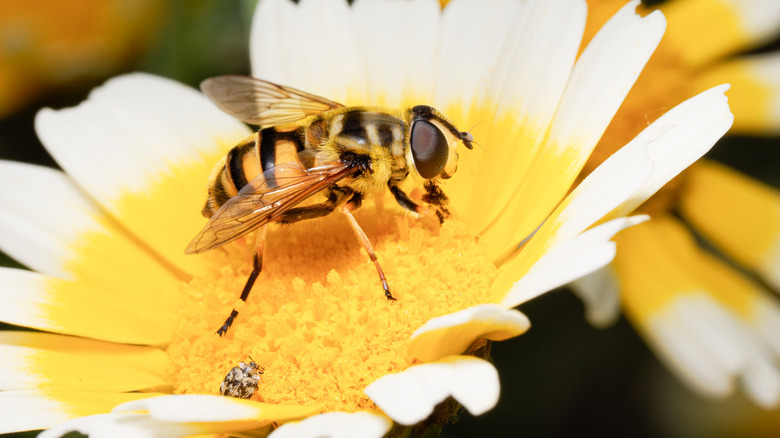Turn An Old Mason Jar Into A Refreshing DIY Water Feature For Exhausted Pollinators
Pollinators work harder than we often realize. From dawn until dusk, the bees, butterflies, and beetles in your yard hustle from bloom to bloom, making sure your garden stays vibrant and productive. But even the hardest workers need a water break. Unfortunately, finding safe, clean water isn't always easy, especially in urban or suburban settings. Many end up risking their lives around chlorinated pools or puddles where they might drown or ingest harmful chemicals.
That's where a simple, charming DIY can make all the difference to reuse common household items and make your home a pollinator oasis. With an old mason jar, you can create a simple yet life-saving DIY water feature that supports your local ecosystem and adds charm to your garden. Mason jars are surprisingly versatile and can be repurposed in countless ways, from garden tools to a cute DIY craft room storage solution.
The reason behind these water features for hydration is surprisingly cool, too. While bees use water to regulate hive temperature (a natural air-conditioning trick), dilute honey, and feed larvae, other pollinators like butterflies and beetles also rely on water to stay hydrated and cool, especially during hot, dry spells. Some, like hoverflies, even use moisture to help with digestion and energy regulation. Just like we grab a cool drink on a scorching day, these tiny workers need shallow, chemical-free water sources to stay safe and effective.
Turn a mason jar into a safe and cute bee water station
Creating a pollinator-friendly water feature is simple. Start with a clean mason jar with a lid and fill it with fresh water. You might also consider adding plain sugar water (made with white granulated sugar only, not organic or raw) during peak pollination seasons to give the insects an energy boost. Just be sure to clean and refresh the water feature regularly to prevent mold or bacteria buildup. After filling your mason jar, punch 8 to 12 small holes about 1/16 inch wide in the lid. This size allows a slow, controlled drip without overwhelming the saucer or drowning pollinators. Screw the lid on tightly, then flip the jar into a shallow saucer.
If you'd rather skip drilling the holes, you can also use a cloth method. Stretch a piece of cotton fabric or muslin over the jar opening and secure it with the lid ring. The cloth will let water seep out slowly, giving bees a safe place to sip without risk. Once the lid is ready, flip the jar onto the saucer and prop it up with stones or twigs to control the flow. Add pebbles, corks, or sticks inside the saucer to give bees and butterflies sturdy landing spots to rest while they drink. Place your DIY pollinator waterer for exhausted pollinators among bright blooms or even near a vegetable bed to encourage more visits. If this sparks your interest, you'll love exploring more illuminating mason jar hacks to light up your home and garden.
